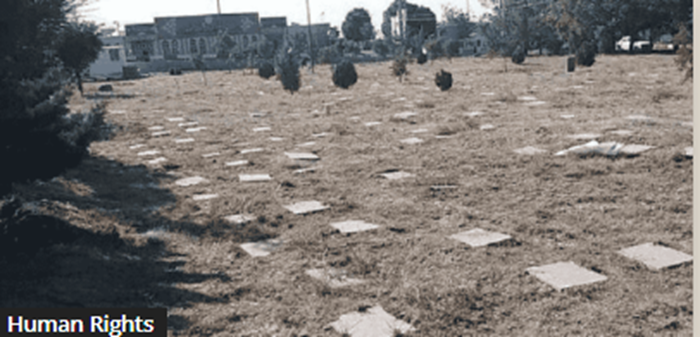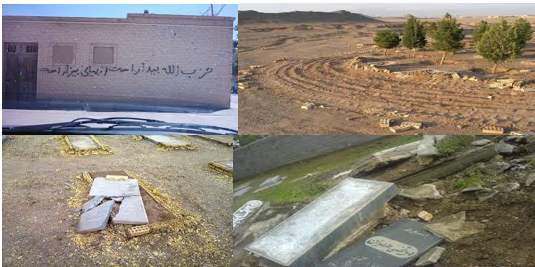
In a recent attempt to erase evidence of historical crimes, Iranian security forces have embarked on a demolition spree, bulldozing portions of the Behesht-e Reza Mausoleum in Mashhad. This mausoleum held the remains of political prisoners executed during the tumultuous 1980s.
The wave of destruction began in early October and has been ongoing, with its roots tracing back to 2015 when the regime first set its sights on eradicating these significant sites. Mashhad is not the sole city witnessing such obliteration. Ahvaz, Tabriz, and Babol have also been victims of this deliberate erasure.
In Ahvaz, a barren plot near the Behesht-e Abad cemetery was desecrated, a site which once held mass graves for 44 political prisoners. Following this, new structures sprouted up, masking the regime’s deeds. Another alarming discovery in Ahvaz saw numerous bodies found in cement-covered mass graves during a street-widening project. The operation was promptly halted by security forces to keep these graves concealed.
The regime’s Ministry of Intelligence took to smearing a thick layer of concrete and cement to wipe away any evidence. Babol experienced a similar fate, with graves destroyed and multi-story apartment buildings, known as Kotsar, erected atop. These units were then allocated to the Revolutionary Guards and regime’s police officials.

over 75 graves from Wadi Rahmat Cemetery in Tabriz, containing victims from the 1988 massacres, were decimated.
Historically, post the 1979 Islamic Revolution, Iran underwent intense political unrest. Ayatollah Ruhollah Khomeini’s regime systematically targeted and executed thousands, culminating in the summer of 1988 – one of Iran’s darkest epochs. During this period, members of the People’s Mojahedin of Iran (PMOI/MEK) were primarily executed, accounting for over 90% of the victims. These executions, sanctioned by Khomeini’s explicit fatwa, were overseen by a “death committee” which included Ebrahim Raisi, the regime’s current president.
An estimated 30,000 political prisoners met their end during this massacre. The clandestine nature of these executions, coupled with the burial in unmarked graves, left countless families in the lurch, unaware of their loved ones’ fates.
International communities and human rights bodies have vociferously condemned these actions as heinous human rights violations. The continuous obliteration of these historical graves further underscores the regime’s attempts at historical whitewashing, leaving numerous families in their relentless quest for truth and justice.

Tehran’s Khavaran Cemetery, traditionally a resting place for persecuted Baha’is, has faced grave rearrangements – another move by the regime to veil its four-decade long trail of atrocities.

MEK Iran (follow us on Twitter and Facebook), Maryam Rajavi’s on her site, Twitter & Facebook, NCRI (Twitter & Facebook), and People’s Mojahedin Organization of Iran – MEK IRAN – YouTu
